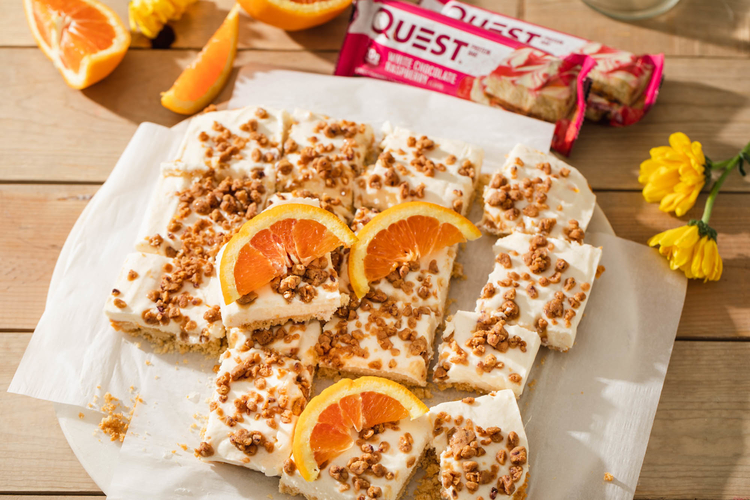Avoid Milk and Sugar for a Clear Complexion
Acne sucks and no one likes it….
Why is it so prevalent in our present times and how can we rectify this current epidemic?
85% of adolescents, as well as men and women in their twenties, experience acne. It is common knowledge to assume the main culprit of this problematic condition is hormone related, and pubescent teens are pulsing the greatest hormone production of their lives during these times. Fluctuating hormone levels do elicit side effects such as acne, BUT there might be some environmental factors that are magnifying these effects.
Let’s face it, the current recommended nutritional guidelines are a bit insane. High carbohydrates, low fat and low protein based nutrition. Also, how many teenagers’ do you know that adhere to meticulous nutritional regimens and properly stay hydrated and avoid excessive empty calories and other “anti-nutritious” foods?
I would guess your answer is “not many.”
Recent research has demonstrated that the consumption of milk and dairy-based products are major players in contributing to the acne epidemic.Milk is loaded with hormones and growth factor’s such as; bGH (bovine growth-hormone) IGF-1 and it also triggers insulin release. Elevated plasma IGF-1 levels from milk further exacerbate endogenous production of hormones that are already high during puberty. The presence of 5a-pregnanedione, 5a-androstanedione and other precursor’s of 5a-dihydrotestosterone add to the potency of milk to increase the formation of acne.
Cheaper milk products currently available derive milk from prenatal cows, which are jacked full of hormones from the pregnancy. DHT is then transferred into the milk product and then consumed by adolescents and young adults in conjunction with their sugary morning cereal!
(High consumption of milk & high glycemic carbs like French fries can trigger acne)
Let’s consider the role DHT plays on the production of sebum. As DHT gets elevated from milk consumption, new sebocytes are produced which ignite more sebum production, which trigger more acne. This vicious cycle is even further magnified by a diet rich in sugar and high-glycemic carbohydrates. Sugary foods with high glycemic loads will induce abrupt pulses of insulin production by the pancreas. The insulin will also spike IGF-1 levels, which are already high in teens and young adults to begin with.
IGF-1 is a mitogen and after IGF-1 attaches to its receptor sites in various tissues, it induces cell division, cell proliferation, and prevents cell apoptosis (which is the death of cells) Keratinocytes (epidermis cells), sebocytes (epithelial cells) as well as the adrenals and gonads, which get stimulated by IGF-1 production.
Here is something to think about –
Notice how you will occasionally see what appears to be a young women, meaning fully developed and looks “of age,‘ then your jaw drops when you realize that this young female is 12 or 13 years old…..
There is sound reasoning for this mind-boggling occurrence. It would be unethical and twisted to inject 8-9 year old females with several hormones such as; estrogen, progesterone, prolactin, testosterone, IGF-1, rHGH and various other growth factors right? Well drinking milk in high amounts is doing just that – saturating their endocrine system with a multitude of growth spurting, powerful hormones. There is research indicating that the average height and body weight of young females has increased dramatically in the last 50 years. I suppose drinking a substance that contains over 59 bio-active hormones can have such an affect.
Back to the subject at hand; What can be done about acne?
For starters stay away from milk or dramatically decrease its consumption. I would suggest exchanging milk for Almond Milk or Coconut Milk. These 2 substitutes are low in calories and do not contain unpredictable hormonal fluctuations and contain MCT fatty acids (coconut milk) & Monounsaturated fatty acids (almond milk). Trust me –YOU CAN STILL ENJOY CEREAL! Of course to keep insulin under control and igf-1 levels stable, the cereal selection should be scored low on the glycemic index and be enriched with dietary fiber.
Some useful herbal based supplements to take for insulin control would be gymnema sylvestre, banana leaf, bitter melon and cinnamon. For pharmaceuticals Metformin, also known as Glucophage, would lower IGF-1 levels and keep insulin and blood sugar at low baseline levels.
If persistent acne stays with you well into adulthood, you need to take charge immediately and get your IGF-1 levels down. As adulthood acne may be considered a health risk factor for increased risk of cancer, which will require dietary modifications and proper natural or pharmaceutical treatment of insulin-sensitizing agents.
As always, I write these articles to give you something to think about and consider. Do I personally stay away from all dairy products? I would be a liar if I said yes. I eat cottage cheese, low-fat mozzarella cheese, greek yogurt (occasionally), and as a competitive Bodybuilder, various forms of dairy protein in powder form is consumed at key times of the day. I do however; avoid milk consumption and use almond & coconut milk instead.
If you suffer with mild to severe acne, try eliminating the consumption of dairy products and also monitor your carbohydrate intake, namely simple sugars. I personally adhere to high fluid intake to constantly stay hydrated and to flush toxins out of the body. I find when I drink 2 gallons of water per day, my complexion improves dramatically.
References:
1.)Danby FW.Nutrition and acne.Clin Dermatol. 2010 Nov-Dec;28(6):598-604.
2.)Melnik BC, Schmitz G.Role of insulin, insulin-like growth factor-1, hyperglycaemic food and milk consumption in the pathogenesis of acne vulgaris.Exp Dermatol. 2009 Oct;18(10):833-41. Epub 2009 Aug 25.
3.)Melnik BC.Evidence for acne-promoting effects of milk and other insulinotropic dairy products.Nestle Nutr Workshop Ser Pediatr Program. 2011;67:131-45. Epub 2011 Feb 16.
4.)Melnik B.[Acne vulgaris. Role of diet].Hautarzt. 2010 Feb;61(2):115-25.
5.)Melnik B.Milk consumption: aggravating factor of acne and promoter of chronic diseases of Western societies.J Dtsch Dermatol Ges. 2009 Apr;7(4):364-70. Epub 2008 Feb 20.


